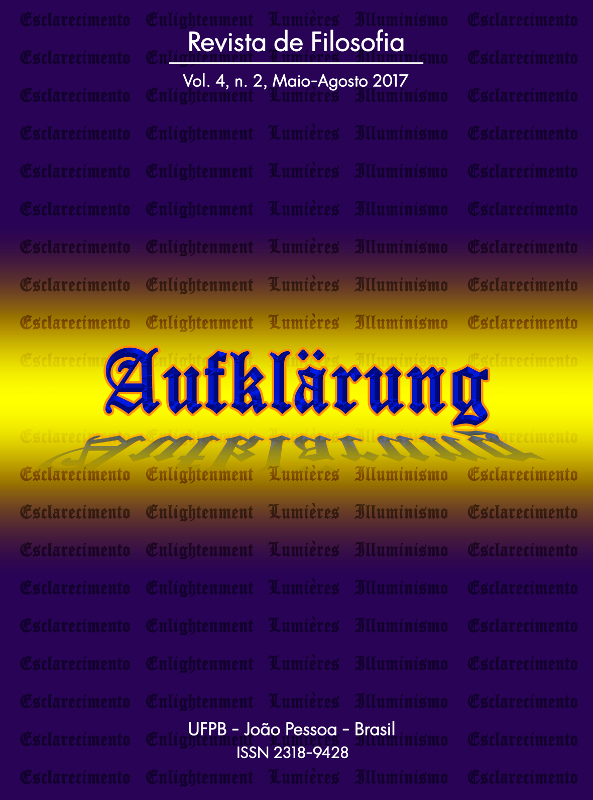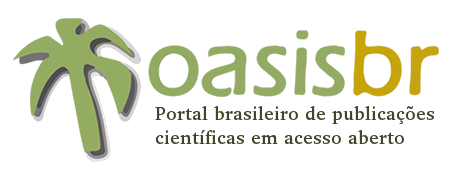Linguistic inter-understanding gives evidence in favor of the mental models theory: Induction and comprehension
DOI:
https://doi.org/10.18012/arf.2016.35229Palavras-chave:
iconicity, induction, inference, inter-understanding, mental modelsResumo
Linguistic inter-understanding is a communicative phenomenon that is well known and that has been studied in detail. It basically consists of the fact that an individual speaking a language is able to understand another person speaking a different language, and this without deeply knowing this last language or being able to express himself/herself in it. The phenomenon, which is especially frequent in the case of very similar languages, occurs because of certain inferential processes that can happen in the human mind when people try to interpret information in a distinct language. In this way, the main aim of this paper is to show how such processes are very akin to some of those that the mental models theory attributes to the human reasoning ability, and that hence linguistic inter-understanding can be considered as evidence that this last theory is, at least partially, correct.Downloads
Referências
BOMPASTOR BORGES DIAS, M. G.; ROAZZI, A. “A teoria da lógica mental: E os estudos empíricos em crianças e adultos.” Psicologia em Estudo, 8(1): pp. 45-55, 2003.
BONVINO, E.; CADDÉO, S.; VILAGINÉS SERRA, E.; PIPPA, S. Eurom5. Ler e compreender 5 línguas românicas. Leer y entender 5 lenguas románicas. Llegir i entendre 5 llengües romàniques. Leggere e capire 5 lingue romanze. Lire et comprendre 5 langues romanes. Milan, Italy: Ulrico Hoepli; Madrid, Spain: SGEL Libros; Paris, France: La maison du dictionnaire, 2015.
BRAINE, M. D. S.; O’BRIEN, D. P. (eds.). Mental Logic. Mahwah, NJ: Lawrence Erlbaum Associates, Inc., Publishers, 1998.
CHÁVEZ SOLÍS, C. F.; ERAZO MUÑOZ, A. “Propuestas plurilingües para la integración latinoamericana: La intercomprensión en lenguas emparentadas como práctica de comunicación y educación.” SURES, 3: pp. 1-17, 2014.
ERAZO MUÑOZ, A. Mutual intelligibility in the plurilingual context of the University of Latin-American integration: Experiences, contact and plurilingual interaction (Spanish text). Saint-Martin-d’Hères, France: Université Grenoble Alpes, 2016.
GENTZEN, G. “Untersuchungen über das logische Schließen I.” Mathematische Zeitschrift, 39(2): pp. 176-210, 1934.
GENTZEN, G. “Untersuchungen über das logische Schließen II.” Mathematische Zeitschrift, 39(3): pp. 405-431, 1935.
GOUVEIA, E. L.; ROAZZI, A.; O’BRIEN, D. P.; MOUTINHO, K.; BOMPASTOR BORGES DIAS, M. G. “Raciocínio dedutivo e lógica mental.” Estudos de Psicologia, 20(3): pp. 135-145, 2003.
HINTERECKER, T.; KNAUFF, M.; JOHNSON-LAIRD, P. N. “Modality, probability, and mental models.” Journal of Experimental Psychology: Learning, Memory, and Cognition, 42(10): pp. 1606-1620, 2016.
JOHNSON-LAIRD, P. N. Inference with mental models. In: HOLYOAK, K. J.; MORRISON, R. G. eds. The Oxford Handbook of Thinking and Reasoning. New York, NY: Oxford University Press, pp. 134-145, 2012.
JOHNSON-LAIRD, P. N. How to improve thinking. In: WEGERIF, R.; LI, L.; KAUFMAN, J. C. eds. The Routledge International Handbook of Research on Teaching Thinking. Abingdon, UK, & New York, NY: Routledge, pp. 80-91, 2015.
LÓPEZ-ASTORGA, M. “The disjunction introduction rule: Syntactic and semantic considerations.” Pragmalingüística, 23: pp. 141-149, 2015.
LÓPEZ-ASTORGA, M. “The Hindu Syllogism, iconic representations, and human thought.” Revue Roumaine de Philosophie, 60(2): pp. 351-358, 2016a.
LÓPEZ-ASTORGA, M. “Towards an updated reasoning formal theory.” Aufklärung, 3(1): pp. 11-32, 2016b.
O’BRIEN, D. P. Mental logic and irrationality: We can put a man on the moon so why can´t we solve those logical reasoning problems? In: BRAINE, M. D. S.; O’BRIEN, D. P. eds. Mental Logic. Mahwah, NJ: Lawrence Erlbaum Associates, Inc., Publishers, pp. 23-43, 1998.
O’BRIEN, D. P. “Conditionals and disjunctions in mental-logic theory: A response to Liu and Chou (2012) and to López-Astorga (2013).” Universum, 29(2): pp. 221-235, 2014.
O’BRIEN, D. P.; LI, S. “Mental logic theory: A paradigmatic case of empirical research on the language of thought and inferential role semantics.” Journal of Foreign Languages, 36(6): pp. 27-41, 2013.
PEANO, G. “De latino sine flexione. Lingua auxiliare internationale.” Revue de Mathématiques (Rivista di Matematica), 8: pp. 74-83, 1903.
PEIRCE, C. S. Collected papers of Charles Sanders Peirce. HARTSHORNE, C.; WEISS, P.; BURKS, A. eds. Cambridge, MA: Harvard University Press, 1931-1958.
QUELHAS, A. C.; JOHNSON-LAIRD, P. N. “The modulation of disjunctive assertions.” The Quarterly Journal of Experimental Psychology, 70(4): pp. 703-717, 2017.
RAGNI, M.; SONNTAG, T.; JOHNSON-LAIRD, P. N. “Spatial conditionals and illusory inferences.” Journal of Cognitive Psychology, 28(3): pp. 348-365, 2016.
TASSARA, G.; VILLALÓN, C. “La intercomprensión de lenguas latinas: Una herramienta para el desarrollo del plurilingüismo en Chile.” Colombian Applied Linguistics Journal, 16(2): pp. 277-290, 2014.
WILKE, V.; LAURÍA DE GENTILE, P. “La intercomprensión en lenguas germánicas en el contexto hispanohablante.” Revista Digital de Políticas Lingüísticas, 8(8): pp. 173-195, 2016.
Arquivos adicionais
Publicado
Como Citar
Edição
Seção
Licença
Política de Direito Autoral para os itens publicados pela Revista:
1.Esta revista é regida por uma Licença da Creative Commons aplicada a revistas eletrônicas. Esta licença pode ser lida no link a seguir: Creative Commons Attribution 4.0 International (CC BY 4.0).
2.Consonante a essa politica, a revista declara que os autores são os detentores do copyright de seus artigos sem restrição, e podem depositar o pós-print de seus artigos em qualquer repositório ou site.
Política de Direito de Uso dos Metadados para informações contidas nos itens do repositório
1. Qualquer pessoa e/ou empresa pode acessar os metadados dos itens publicados gratuitamente e a qulquer tempo.
2.Os metadados podem ser usados sem licença prévia em qualquer meio, mesmo comercialmente, desde que seja oferecido um link para o OAI Identifier ou para o artigo que ele desceve, sob os termos da licença CC BY aplicada à revista.
Os autores que têm seus trabalhos publicados concordam que com todas as declarações e normas da Revista e assumem inteira responsabilidade pelas informações prestadas e ideias veiculadas em seus artigos, em conformidade com a Política de Boas Práticas da Revista.






































